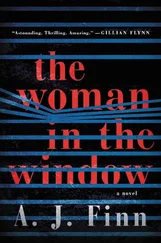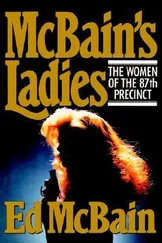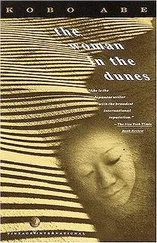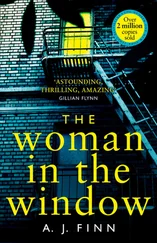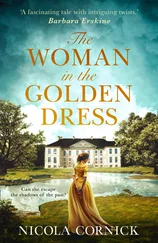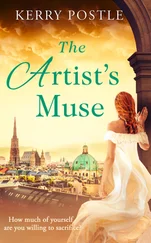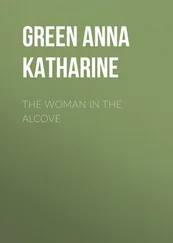Gifted, feted, popular, they enjoyed all the dishes at the rich man’s table without having to torture or kill for them. Though Michelangelo had seemed no less ruthless to me.
It’s true that most artists sang their happy song like a bird within its gilded cage, wings clipped, without the freedom to sing as they chose, fly where they might or most importantly paint what they liked. But one or two, whenever their patrons left the cage door wide open, soared high above and up into the heavens. And there they dazzled us.
Michelangelo was one such painter, though his temper was as brutish as his work was divine. And yesterday, talk in his workshop had turned to another: Raphael Sanzio. Though I’d not yet seen a single one of his paintings (he’d been working in Florence), I knew that as an artist he shone so brightly that nothing could subdue his brilliance, nor eclipse his perfection. Perfetto, ottimo, squisito, meraviglioso, eccellente, superior, divino . It was claimed that there weren’t enough superlatives in the whole of the Italian language to express how exceptional Raphael was. And rumour had it that as a man he was as sublime as his work, in both character and appearance.
And now he was coming to Rome. The prospect of his imminent arrival was causing the already full cups of the rich and powerful to bubble over. Lists were being drawn up in fortified palazzos around the city of all the artworks they would have Raphael paint for them. Of altarpieces, frescoes, birth trays, tondi, even going so far as to ponder which jewels and garments each family member should wear for that most essential object for the aristocrat hoping to dazzle with a show of wealth – the portrait. Prosperous families were coming to blows over whom Raphael would paint first.
And Michelangelo hated him for it.
That was why two starry-eyed apprentices, caught with Raphael’s name in their mouths, were beaten and dismissed with nowhere to go. Luigi and Federico had promise. They would never fulfil it now, the fools. Those of us suspected of the lesser crime of listening to them had received a good kicking but were not completely discarded. Michelangelo had handed us over to another artist who had recently arrived in Rome, this time from Venice.
‘That artist you’ve been passed on to, Sebastiano Luciani, he’s got a good reputation. But be careful. They say he’s another moody bastard.’ My brother Giacomo’s voice, deep with sleep, pulled me back to the present. He had still to get up. ‘So keep your head down, otherwise Father will have it.’ He yawned. ‘And don’t speak unless you have to. That stammer of yours can get you into trouble.’ Giacomo’s eyes studied my attire as I left the room. ‘And try not to draw too much attention to yourself,’ he called after me as I stooped down to pick my jacket up from the floor. I left, closing the door behind me.
I’d recently started grinding pigments at Michelangelo’s. I’d enjoyed it. I walked in disgrace to the workshop of my new maestro, Sebastiano Luciani. A great colourist, he would surely have pigment grinders of his own. So what of me? Only the idea of Raphael Sanzio, an artist beautiful in mind and body, or so it was said, prevented me from feeling like a condemned man. By the time I stepped over the threshold of my new maestro’s workshop I knew what I had to do – not say a word and try my best. I took off my jacket and ran a hand over my hose for luck before pulling on a white tunic and tying my leather apron at the back.
I had much to learn, from watching more advanced apprentices as well as observing Sebastiano himself. Yet as I and the other boys were taken round the workshop that first morning to admire our new maestro’s work, I for one saw nothing superior in it. Though I knew better than to share my opinion. With every flick of Sebastiano’s self-satisfied wrist as he presented another of his paintings to us, my face expressed wonder while my mind felt nothing but disappointment. The artist from Venice had some way to go before he even came close to deserving the reputation bestowed upon him.
It was said he had trained under the great Giorgione. If that was true he disguised it well.
‘And this,’ he said, standing in front of an unfinished work depicting a young, dark-haired woman, a fur-lined cape draped over her shoulder, ‘is a piece I call La Fornarina – The Baker’s Daughter – because she is the woman in the painting.’ He clapped his hands together with delight and gave a little laugh as though sharing a secret joke with someone. No one laughed back.
‘Note the composition … and the tones here … and here … And I say again, it’s of …’ He paused like an actor waiting for the crowd to finish his line. The silent horseshoe of apprentices grew bigger as each boy, bar one, breathed in. They wiped the palms of their hands on the leather aprons that protected their belted white tunics while taking a step back. Their wide eyes shouted respect and fear but not a peep came out of their mouths. Only Giulio Romano, standing at one end, an apprentice I’d known quite well at Michelangelo’s, seemed calm and composed enough to say anything. I was surprised to see him here. Giulio was older than me and more skilful than the rest of us, the equal of Giovanni da Udine, who wasn’t here; Michelangelo must have kept him on. Giulio appeared decidedly unimpressed as he looked at the unfinished painting before him. I caught his eye, distracting him from his silent assessment. He raised an eyebrow, mouthed: ‘You tell him what it’s called.’ I looked at him with foolish, trusting eyes and began.
‘ La F-f-forn, f-forn … ’ My mind swam, my face felt hot, and my eyes asked Giulio for guidance.
He mouthed: ‘La F-f-fornicatora.’ Desperate and horrified that I’d stammered, I took Giulio’s lifeline without caring to see what it was. Without thinking I threw it back out as quickly as I could.
‘ La F-f-fornicatora .’
The moment I said it I knew. And the squeal of delighted horror that pierced my left ear made by the young boy standing next to me confirmed it. But it was too late to take it back. The new apprentices fizzed and frothed, unable to suppress their mirth, and as I searched Giulio’s face for an explanation I saw that his treacherous eyes had disappeared behind tears. Of laughter.
‘Stupid boy!’ It was Sebastiano who spoke.
Something ungovernable had been unleashed and the maestro of the workshop, the great Sebastiano Luciani, held me responsible for unleashing it.
He stood and waited, holding his head high like the grand maestro that he was. He coughed first, glowered second, and on the third count he attempted to beat the horseshoe of apprentices back into shape.
‘It’s called La Fornarina . FOR-NA-RI-NA !’
Squeaks and titters escaped from behind hands. The damage had been done. Sebastiano ranted and railed like a bad choirmaster unable to keep control. Squeaks became shrieks, the titters guffaws. Eventually, beaten, a pained expression settled on his face and his nose twitched as if displeased by a bad odour. ‘Let’s to work!’ he exclaimed with a clap of his hands. And then he walked away.
That was the end of our introduction to the workshop, and my first meeting with la fornarina , the woman in the painting. I did not like her.
Chapter 2 Chapter 2 Chapter 3 Chapter 4 Chapter 5 Chapter 6 Chapter 7 Chapter 8 Chapter 9 Chapter 10 Chapter 11 Chapter 12 Chapter 13 Chapter 14 Chapter 15 Chapter 16 Chapter 17 Chapter 18 Chapter 19 Chapter 20 Chapter 21 Chapter 22 Chapter 23 Chapter 24 Chapter 25 Chapter 26 Chapter 27 Chapter 28 Chapter 29 Chapter 30 Chapter 31 Chapter 32 Chapter 33 Chapter 34 Chapter 35 Chapter 36 Chapter 37 Chapter 38 Chapter 39 Chapter 40 Chapter 41 Chapter 42 Chapter 43 Historical Note Acknowledgements Dear Reader … Extract Keep Reading … About the Publisher
Читать дальше

